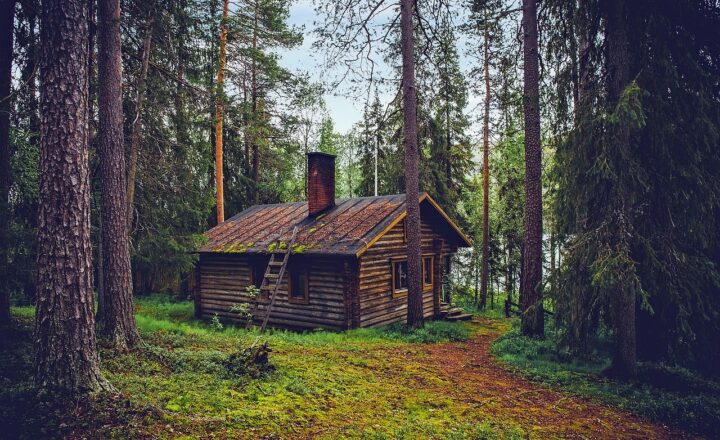A Journey Through Time: Exploring the Craft of DIY Projects Over the Decades
November 18, 2024

DIY, or Do-It-Yourself, projects have become a cultural phenomenon over the decades, reflecting social changes, technological advancements, and shifting aesthetics. This article takes you on a journey through time, examining how DIY projects have evolved, the trends that influenced them, and their enduring appeal.
1. The Early Days: DIY in the 1920s and 1930s
The concept of DIY can be traced back to the early 20th century, particularly the 1920s and 1930s. During this period, society was marked by economic challenges, leading many households to adopt frugal living. The introduction of The Great Depression encouraged families to become self-reliant, leading to a significant rise in homemade crafts.
People took pride in repurposing materials. Common DIY projects included:
- Homemade Furniture: Affordable options were made from reclaimed wood and other materials salvaged from factories or homes.
- Knitting and Sewing: Handcrafted clothing and textiles became commonplace as families learned to sew to save money.
- Gardening: Victory gardens emerged, with people transforming their yards into self-sustaining vegetable patches.
The DIY spirit of this era laid the groundwork for future generations, instilling a sense of pride in craftsmanship and self-sufficiency.
2. The Post-War Boom: 1940s to 1960s
After World War II, society experienced significant changes. The post-war boom, coupled with technological advancements, brought about a new wave of DIY projects that embraced modernity while still valuing craftsmanship.
During this time, the following DIY trends became popular:
- Home Improvement: Suburban living sparked a need for home renovations and enhancements, leading to the rise of workshops and DIY classes.
- Crafting with New Materials: Advances in materials—like plywood and plastic—opened new possibilities for creative projects.
- Hobbies for All: Clubs and community centers flourished around crafting, bringing people together to explore DIY projects from woodworking to home décor.
The crafting landscape was transforming, making DIY accessible and appealing to diverse groups of people.
3. The Craft Revolution: 1970s to 1980s
The 1970s and 1980s heralded a Craft Revolution, emphasizing personal expression through home projects. Influenced by the growing counterculture, DIY became an art form.
Key developments during this period included:
- Macramé and Tie-Dye: These crafts became symbolic of the free-spirited nature of the era, filling homes and wardrobes with vibrant colors and unique patterns.
- Craft Stores on the Rise: Specialty craft shops began to pop up, providing materials and inspiration for aspiring crafters.
- Public Access to Crafting: New television shows, like “The Joy of Painting” with Bob Ross, inspired a generation to take up painting and other artistic endeavors.
The craft movement of this time reflected a desire for individuality and an increase in crafting’s cultural significance.
4. The Digital Age: 1990s to 2000s
The advent of the internet transformed the DIY landscape irrevocably in the 1990s and 2000s. Online resources gave enthusiasts access to new information, tutorials, and communities.
Popular trends during this era included:
- Online Communities: Websites like DIYNetwork and YouTube fostered communities sharing tutorials and inspiration.
- Blogging and Personal Websites: Many enthusiasts started sharing their DIY projects and tips online, leading to influencer culture.
- Upcycling and Recycling: As awareness of environmental issues grew, DIY projects frequently involved reusing materials creatively.
The connection between DIY and environmental consciousness became a defining aspect of the 21st century.
5. The Modern DIY Movement: 2010s to Present
Today, DIY continues to flourish, driven by a blend of nostalgia, sustainability, and technological influence. The availability of materials and internet access has made it easier than ever to embark on projects.
Current trends include:
- Home Automation and Smart DIY: The rise of smart technology has led to an increase in DIY projects that focus on integrating home automation.
- Social Media Influencers: Platforms like Instagram and TikTok have birthed a new wave of DIY influencers showcasing their creative processes.
- Sustainable Crafts: More enthusiasts are prioritizing eco-friendly materials and practices, revitalizing older crafts with a modern twist.
DIY projects today not only reflect individual creativity but also an awareness of broader social and environmental issues. The practice is as relevant as ever, with more people than ever engaging in crafting and home improvement.
Conclusion: The Enduring Appeal of DIY
As we move forward, the DIY movement continues to unite individuals in creativity, craftsmanship, and sustainability. Whether through home décor, artisanal crafts, or community projects, the art of doing it yourself will remain a vibrant part of our culture. Through the decades, DIY reflects social needs, personal expression, and the desire for self-sufficiency.
By exploring the history of DIY projects, we can appreciate not just the individual works but the collective journey of creativity that binds us together as a community.





